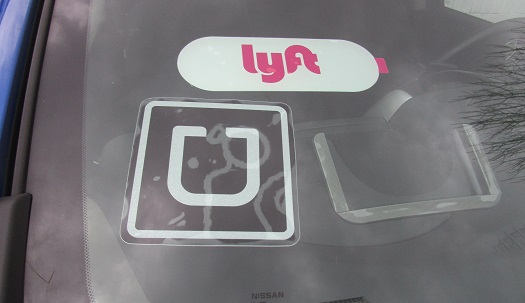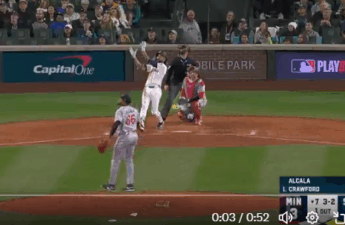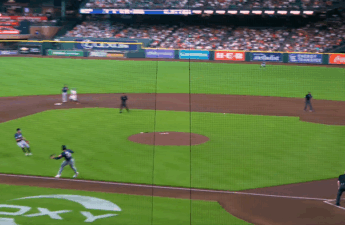
For more of my life than I care to admit, I was an avid player of Dark Age of Camelot, a massively multiplayer online role-playing game (MMORPG for, well, long). Dark Age, for the uninitiated, was basically the precursor to World of Warcraft (WoW), which you’ve definitely heard of, except the graphics were better (far less cartoony) and the game was harder. Much harder. When a former family member got me WoW for Christmas (perhaps the last thing I wanted at the time), I remember playing it and marveling at how little work everything took. Dark Age felt like work and, thus, in its weird way, was kind of rewarding.
In Dark Age, I primarily played a bard, who I named Fiver Mep, whose task was to sing and play songs to aid, comfort, and heal his friends. Bards in Dark Age were (I should say “are” because the game still exists and I still occasionally play the free months the remnants of the game offers me to try to get drawn back into the addiction) equipped with three particular songs: one providing power, one endurance, and one speed (of movement, not amphetamines). The intent was that only one of these could be played a time – it’s pretty hard to imagine that multiple songs offered by a bard simultaneously would be of any real value. However, at some point early in the game’s inception, a bard discovered that two songs could be played at once to mutual effect. This strategy came to be known in the gameplay parlance as “twisting”.
Because each task in the game was initiated by a keystroke, twisting entailed constantly pressing two buttons in a row, in a vaguely frenetic rhythm, permanently during the game. This while also peppering in other tasks such as, for instance, typing to chat with other players or pressing buttons to heal or conduct other magical activities entailed in the game. I tried twisting for an hour or two one night and quickly found that it wasn’t for me. Playing just one song didn’t involve any repeated keystrokes at all – just a single button to start the song, which would play indefinitely until you decided to stop. This differential in gameplay experience was easily the distinction between enjoying a game that still felt a little like work sometimes and working very hard indeed at a job that was supremely boring. Many players disregarded or refused to adventure with Fiver when he informed them, emphatically, that he did not twist. Others, who had actually played bards in other lives, were more forgiving.
I offer all this as a little metaphor, though one that most may find inscrutable, for the experience of simultaneously driving for Uber and Lyft. I have now been an Uber driver for just shy of nine months (!), but only recently finally got around to signing up for Lyft. The primary motivation was the emerging #DeleteUber campaign sweeping the nation in the wake of the startling discovery that a corporate CEO was not, in fact, a good person. While I myself was not about to delete Uber, I had long been wondering if Lyft was better in some way and was eager to not lose all my business, or at least all my business that hated Donald Trump (read: basically all my business). Plus, it felt like essential research for my book: it would be weirdly neglectful to write a whole book about driving for Uber and not even mention Lyft or detail the rival’s pros and cons. So a couple weeks ago, I began peppering in sessions of Lyft.
The word on the street has always been that Lyft pays better (including and especially because they enable tipping through the app), while Uber keeps you busier because many more people use Uber. I have since been told that this last part is a regional difference – there are apparently some US cities where Lyft is actually the primary service and Uber is struggling to catch up. But in New Orleans, Uber is completely dominant, or at least was before the advent of the Trump administration. In my time with Lyft so far, most of the stereotypes above have demonstrated themselves to be true, though the better money is somewhat inconsistent. There is a $1.25 fee built into each fare with both services – Uber pockets this, but Lyft splits it with drivers. Thus the minimum driver compensation for a ride is $3.75 with Lyft and $3.00 with Uber. For about six weeks, Uber actually upped theirs to $3.75 (for min-fares only, keeping the difference for all longer rides) in New Orleans and lowered the airport pick-up bonus to try to stop 80 people at a time from waiting 60-90 minutes in the airport lot for a single trip. Apparently, this brought about heavy backlash from the seeming majority of NOLA Uber drivers who just want to be airport shuttles and they reversed the change. No amount of praise for the change from me could stop it, so I was pleased to see the extra 75 cents a ride from Lyft, which really adds up when you’re doing short runs in the Quarter.
Tipping, however, has proven to be a bit of a red herring. While it is true that a much higher portion of Lyft riders tip than Uber riders (I would say roughly 40% choosing to tip as opposed to the 12-15% I’m used to), the tips tend to me much smaller. With cash tips, $5 is customary (people actually apologize for tipping less even though everyone tipping me exactly $1 per ride would yield more in total tips than I currently receive) and $20 is not terribly uncommon. It helps, I suppose, that it’s usually 2:30 AM and people are drunk out of their minds. Whereas the cold sobriety of the app, plus the option to decide on a tip up to 24 hours later, yields a ton of $1 and $2 tips. Now, don’t get me wrong, $2 tips are fantastic! But it’s not quite the difference of tripling my tip total vs. Uber that was purported. Additionally, of course, all the Lyft app tips are reported to the IRS, so that can be a difference depending on how you treat your cash tips (relevantly, many waitstaff and bartenders still give cash tips on Lyft). Though as I’m realizing doing my taxes this year, the US has lots of ways to make it basically impossible for anyone who claims to be in business to pay any taxes whatsoever. The horror stories and fears I had about a significant Uber tax liability have been pretty well put to bed by a quick tax session Uber hosted and a newly thorough understanding of Schedule C.
The really tangible potential differences in money break down as a comparison between Uber’s surge and Lyft’s Power Driver status. Uber’s (in)famous surge pricing squares up supply and demand and offers a real opportunity to make bank when driving during, say, Halloween weekend, or, as I can hardly imagine, the upcoming weekend featuring a full slate of Mardi Gras parades and the NBA All-Star Game. When demand is high, during such times or at the end of a game or concert, then Uber drivers can make a normal night’s worth of fares in a good few rides. This is definitely slightly over-rated as part of the income of Uber driving, especially with recent efforts by the company to nerf surge by making the zones much smaller and rebound on each other more slowly. But it can add up on Saturday nights and holidays and during events. Lyft allegedly offers PrimeTime as their corollary to this, but there’s only one problem. It is, apparently, a lie. When you agree to do an Uber pick-up, they tell you the value of the surge the fare will carry. I have done hundreds of surge rides and they’ve all added up to the total promised. When you agree to do a Lyft pick-up, however, they do not tell you if it has a PrimeTime value. And despite picking up many riders in the thick of a pink-shaded PT event, not one of my 88 Lyft rides to date has been deemed a PrimeTime fare. Some preliminary Internet research reveals widespread belief that PrimeTime is somewhere between a scam and a myth and my experience certainly correlates to this. More disconcertingly, many drivers attest that their riders have said they were charged PrimeTime for pick-ups that did not pass such bonuses on to the driver.
This would make Lyft super problematic were it not for the Power Driver status, which is almost enough and possibly quite enough to forgive them for lying about PrimeTime, if they in fact are. (It’s possible that it just doesn’t work somehow, given Lyft’s other technological inferiorities, below.) If a driver accepts 90% of their offered Lyft rides in a week, while completing at least 15 rides during peak hours (a narrow band of afternoon rush hours plus Thursday, Friday, and Saturday nights) and 40 rides total, one gets an extra 10% of the total fares, getting 85% instead of the normal 75%. Bump those last two numbers up to 20 and 60 and you get another 10%, meaning you keep a full 95% of the fare charged to the rider (less whatever lying about PrimeTime may be happening, of course). For those of you used to Uber rates, this is the equivalent of getting 1.26x surge on every single ride for the whole week. That’s pretty great. The one week I made the grade here, it was worth an extra hundred bucks. Not enough to compete with surge during Mardi Gras, perhaps, but certainly something to boost a lot of Tuesday nights.
The problem, of course, is that Lyft is often slower than Uber, and more problematically is not afraid of sending you on a wild goose chase for a fare. Uber often strands riders with their requirement that every pick-up be 10 minutes or less from a driver’s current location. (Surge gets triggered if no riders are available within 10 minutes.) Lyft, on the other hand, has given me multiple requests that are 25-27 minutes away. Which is insane. Especially in New Orleans, where you’re always 15 minutes from everything. 13-20 minutes away is a regular occurrence. Of course, most Lyft riders don’t want to wait this long, so 85% of my requests that are that far away get cancelled within 3 minutes. Which just doesn’t smack of efficiency. And because acceptance rate is such a core part of Lyft’s access to the coveted Power Driver status, then you really can’t just turn your nose up at a 20-minute trek. With Uber, I often have enough work that I decline something 8-10 minutes away as requiring too much unpaid gas.
As a result, twisting becomes the norm, especially not on weekends or during events that are busier. In this instance, twisting entails keeping both apps on simultaneously and ready to go, then switching off one app as soon as a request comes in on the other. As I predicted when I first heard about this, this process is hectic and stressful, especially when you remember that you are also, y’know, driving while this happens. Usually driving just involves hitting the phone screen once and then a second time to navigate – not hard when the phone is mounted to the air conditioner or some equally accessible spot. But all the opening and closing of apps is challenging. Already, I’ve had two instances of basically simultaneous requests and had to cancel one (usually the Uber one because acceptance rate –> Power Driver) and just take the other. It’s not quite playing power song and endurance song at once for hours, but it’s not the easiest either. And at least that only impacted fake or simulated people, er, magical creatures?
Of course, the problem is that just choosing one of the apps now creates this insidious FOMO effect whenever one doesn’t immediately have a ride request. I am driving around just trawling for a ride, but I could have both apps on, my brain tells me. I bet there are constant requests on the app you have closed! Is it really that hard to twist?
A week before Saturday, I even was double-apping on a Saturday night, something I swore never to try because of how busy Saturday nights are ’round here. But that promise was so quickly broken the second I’d gone five minutes without a request.
As far as other empirics, there’s not a lot of difference. There seem to be more women traveling alone on Lyft, which is a big part of their marketing strategy for both drivers and riders. (Lyft actually conducts an interview, which Uber does not, though I would not exactly describe it as much of a screening process from my experience.) Lyft riders have disproportionately talked about how they don’t want to use Uber, or are trying not to, but many find it hard in New Orleans given the dominance of Uber in the market. Lyft riders seem much more diligent, on average, about being ready for their ride right away when I pull up, though this may be a product of the significantly longer wait times involved in sending drivers long distances to pick-ups. When the GPS or rider mess up on the map, Lyft automatically starts the ride when you leave to go to the right location. While this theoretically is to help the driver get compensated, it empirically just creates cancellations when the rider freaks out that they’re listed as riding in the car when, in fact, they are not. Lyft won’t let you text riders for some reason, which Uber insists is what riders prefer. Most riders on both platforms cannot remember which service they’ve used to hail me, which is something I definitely remember from just doing Uber as well. Though the ones that do remember and are not strongly anti-Trump have usually just had a bad experience with Uber, which seems weird to me knowing that so many drivers use both platforms interchangeably.
Many people in the cultural imagination, including a guy out front of a bar last night who saw both my signs in the windshield and asked me incredulously how such a thing was possible and wasn’t I a traitor to both companies, seem to not realize that one can do both, much less at the same time. For companies that brand themselves with such contrast, black vs. pink, businesslike vs. whimsical, pro-Trump (now not-un-pro-Trump?) vs. anti-Trump, the reality is basically the same. You are in a person’s car and they are taking you where you want. No matter how much corporate veneer and artifice we put on things, we remain, unflinchingly, just people in all that we do.


